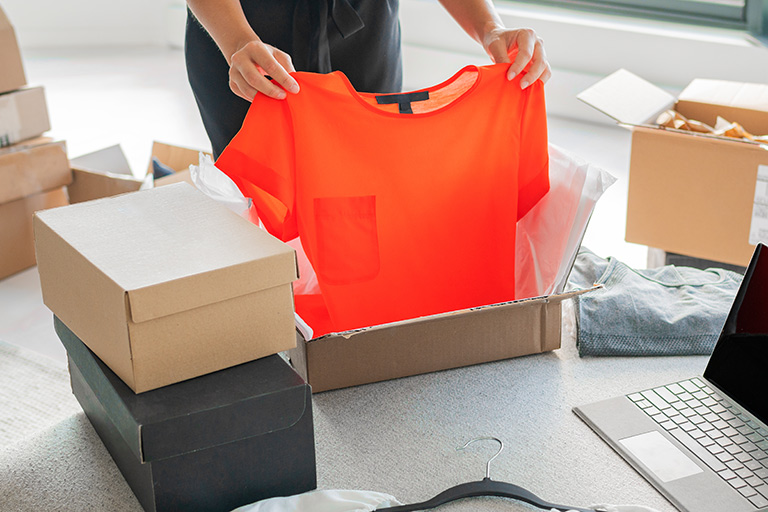How To Tap 3 Key E-Commerce Trends This Holiday Season
A string of shopping festivals and gift-buying season in full flow can only mean one thing: the busiest time of the year for Asia’s e-commerce businesses.
Started shopping for the festive season? It’s the time of year when the holiday gift-buying season is traditionally at its peak. However, it’s not always easy for e-commerce businesses to get a slice of consumer spending. For the second time running this year, China's biggest e-commerce players chose not to reveal their Double 11 (or Singles Day) sales figures after the annual shopping festival. In the last 12 months, the rising cost of living and inflation hikes meant that end-of-year spending was lower compared to previous years.
This year, some forecasts predict that spending will rise once again, particularly in Southeast Asia. Consumers are still shopping: they’re just shopping smarter, being more strategic about how they spend and the platforms they use. In response, retailers have ramped up efforts to cut through an increasingly crowded online marketplace and build an omnichannel strategy to capture customers.
With the festive shopping season in Asia extending into Lunar New Year and beyond, we look at strategies to help retailers stay ahead this holiday season.
1. E-commerce 3.0: winning through immersive experiences
E-commerce 1.0 was all about building a website and cataloguing for people to purchase. E-commerce 2.0 focused on building omni-channel retail and understanding more about customer buying patterns through data analytics.
We’ve now entered the era of e-commerce 3.0, which integrates livestreaming and augmented or virtual reality to create immersive customer experiences. The goal? Better brand and product understanding and better service to those browsing online.
RELATED: Your guide to e-commerce shipping with FedEx
This year, some forecasts predict that spending will rise once again, particularly in Southeast Asia. Consumers are still shopping: they’re just shopping smarter, being more strategic about how they spend and the platforms they use. In response, retailers have ramped up efforts to cut through an increasingly crowded online marketplace and build an omnichannel strategy to capture customers.
With the festive shopping season in Asia extending into Lunar New Year and beyond, we look at strategies to help retailers stay ahead this holiday season.
1. E-commerce 3.0: winning through immersive experiences
E-commerce 1.0 was all about building a website and cataloguing for people to purchase. E-commerce 2.0 focused on building omni-channel retail and understanding more about customer buying patterns through data analytics.
We’ve now entered the era of e-commerce 3.0, which integrates livestreaming and augmented or virtual reality to create immersive customer experiences. The goal? Better brand and product understanding and better service to those browsing online.
RELATED: Your guide to e-commerce shipping with FedEx

China has long been the global trendsetter in the e-commerce field and it’s fair to say what happens here typically defines the way forward. With more than 765 million Chinese engaging with livestreams and shopping online, livestream platforms are now a critical engine driving e-commerce growth.
As more small businesses build their e-commerce presence, China’s live commerce successes are now being replicated elsewhere in the region. The number of consumers regularly shopping on social media platforms is going up, as high as 82% and 86% in Thailand and Vietnam respectively. Korean consumers too, have a growing interest in live shopping and tapping live commerce across many of their platforms.
And technology such as VR and AR is becoming more prevalent – and important. Spending on AR/VR solutions is expected to capture US$14.8 billion by 2026, with a major chunk of VR spending coming from the consumer industry.
How can e-tailers take advantage of these growing trends? Live streaming is something all brands can experiment with, testing what works and trying different platforms and formats to see what appeals to their audience. An investment like VR/AR might not be possible overnight, but future-forward SMEs that look into solutions like this now may be able to prepare for next year’s festive peak.
2. Dig deeper: Consider subscription models
E-commerce may have lowered the barrier to making a transaction, but making sure your customers come back for more can be tricky. Consumers are inundated with a sea of product information every day. A simple search for ‘camera’ on a leading online retail platform yields 70,000 results, and let’s not forget the programmatic advertising that consumers are exposed to once the search occurs. In short, consumers are easily distracted.
RELATED: Turn online window shoppers into frequent buyers
Subscription models can help increase customer retention while bringing in a repeat stream of income for the leaner periods when new customers are hard to come by. E-commerce businesses across the region are already capitalizing on this trend. Just look at the popularity of monthly wine hampers in Australia, beauty boxes in Korea, and premium fruit baskets in Japan.
As more small businesses build their e-commerce presence, China’s live commerce successes are now being replicated elsewhere in the region. The number of consumers regularly shopping on social media platforms is going up, as high as 82% and 86% in Thailand and Vietnam respectively. Korean consumers too, have a growing interest in live shopping and tapping live commerce across many of their platforms.
And technology such as VR and AR is becoming more prevalent – and important. Spending on AR/VR solutions is expected to capture US$14.8 billion by 2026, with a major chunk of VR spending coming from the consumer industry.
How can e-tailers take advantage of these growing trends? Live streaming is something all brands can experiment with, testing what works and trying different platforms and formats to see what appeals to their audience. An investment like VR/AR might not be possible overnight, but future-forward SMEs that look into solutions like this now may be able to prepare for next year’s festive peak.
2. Dig deeper: Consider subscription models
E-commerce may have lowered the barrier to making a transaction, but making sure your customers come back for more can be tricky. Consumers are inundated with a sea of product information every day. A simple search for ‘camera’ on a leading online retail platform yields 70,000 results, and let’s not forget the programmatic advertising that consumers are exposed to once the search occurs. In short, consumers are easily distracted.
RELATED: Turn online window shoppers into frequent buyers
Subscription models can help increase customer retention while bringing in a repeat stream of income for the leaner periods when new customers are hard to come by. E-commerce businesses across the region are already capitalizing on this trend. Just look at the popularity of monthly wine hampers in Australia, beauty boxes in Korea, and premium fruit baskets in Japan.

Partly fuelled by a growing consumer preference for personalization, subscription habits have gone mainstream thanks to digital services and video streaming platforms. What started as a lockdown fad for many has become the norm.
Top tip: Retailers should combine subscription commerce offers with customer-centric payment options such as buy now, pay later. That way, they have a greater chance of tapping revenue that lasts beyond peak shopping season. Offering a lucrative discount on subscription commerce during one of the many holiday shopping festivals can help to get users signed up for the long-term.
3. Supply chains: stay agile and keep your options open
In the old days, e-shoppers’ focus sat squarely on price. But in today's on-demand economy, where instant gratification means the world to consumers, personalized delivery services count. When and where the product should arrive and whether it can be collected from a convenient drop-off point are critical to driving sales.
That means companies need to build more robust delivery services and resilient supply chains to meet consumer needs. It’s no exaggeration to say that your e-commerce success depends on how strong your supply chains are. Even though consumer demand may fluctuate in response to the global economy, e-tailers still need to fulfil orders reliably and consistently.
RELATED: How to build a customer-centric supply chain
Collaborating with a reliable logistics company that can flex its network to reach your customers in whatever circumstances is critical. You earn an extra bonus point if your consumers save on delivery costs. And that’s exactly where our expertise lies – fast and convenient international delivery services at attractive prices.
As always, the holiday season is a critical period for small businesses and e-commerce merchants, presenting both opportunities and challenges. A chain is only as strong as its weakest link, so make sure that logistics support is your point of strength. Make this a time of festive cheer for your customers and your business.
For more tips and advice on shipping throughout peak holiday season and beyond, visit us here.
Top tip: Retailers should combine subscription commerce offers with customer-centric payment options such as buy now, pay later. That way, they have a greater chance of tapping revenue that lasts beyond peak shopping season. Offering a lucrative discount on subscription commerce during one of the many holiday shopping festivals can help to get users signed up for the long-term.
3. Supply chains: stay agile and keep your options open
In the old days, e-shoppers’ focus sat squarely on price. But in today's on-demand economy, where instant gratification means the world to consumers, personalized delivery services count. When and where the product should arrive and whether it can be collected from a convenient drop-off point are critical to driving sales.
That means companies need to build more robust delivery services and resilient supply chains to meet consumer needs. It’s no exaggeration to say that your e-commerce success depends on how strong your supply chains are. Even though consumer demand may fluctuate in response to the global economy, e-tailers still need to fulfil orders reliably and consistently.
RELATED: How to build a customer-centric supply chain
Collaborating with a reliable logistics company that can flex its network to reach your customers in whatever circumstances is critical. You earn an extra bonus point if your consumers save on delivery costs. And that’s exactly where our expertise lies – fast and convenient international delivery services at attractive prices.
As always, the holiday season is a critical period for small businesses and e-commerce merchants, presenting both opportunities and challenges. A chain is only as strong as its weakest link, so make sure that logistics support is your point of strength. Make this a time of festive cheer for your customers and your business.
For more tips and advice on shipping throughout peak holiday season and beyond, visit us here.
***


















 The Latest
The Latest